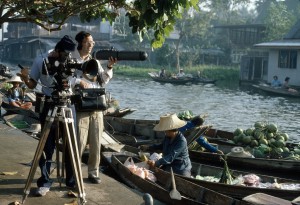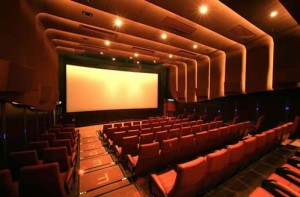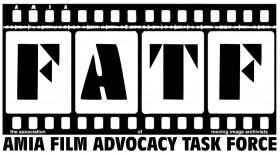Chair of the Film Advocacy Task Force, Elena Rossi-Snook, discussing film-based access in the context of the original surviving print of Los Sures
Courtesy Christopher Allen and UnionDocs
Los Sures (Dir. Diego Echeverria) is a powerful 1984 portrayal of a Brooklyn neighbourhood grappling with the social and economic challenges presented by high crime rates, violence, racial tension, dereliction and deprivation. Determined to overcome this, however, is a community rich in culture and creativity.
30 years on, this notable film has been preserved by the New York Public Library using an original print in its circulating 16mm film collection. Film-to-film preservation was done by Colorlab from the original 16mm print and resulted in the creation of a new preservation negatives and a 16mm access print which is available to the public.
As a tangible, durable record of its time, Los Sures has further provided the foundation for an updated documentary project, Living Los Sures, by locally-based UnionDocs. This Multi-Author Place, Media, and Art Project (MAAP) uses UnionDoc’s expansive documentary approach embracing film / video, radio, photography, performance, interactive and locative media to bring the story into the present and to promote new forms of community engagement and discovery.
UnionDocs utilised the New York Public Library’s original 16mm print to remaster the work on digital video for the Living Los Sures project.
This kind of multi-purpose institutional and community collaboration is a perfect demonstration of the ongoing relevance of and argument for film conservation and preservation: by conserving the original print – keeping it in cold storage, employing careful handling when projected – the film was available, 30 years after production, for transfer to both new film elements and to contemporary digital video formats. It is therefore now available equally as an online interactive community outreach exercise and as a projected-film experience.
Preserved by the Reserve Film and Video Collection of The New York Public Library for the Performing Arts



